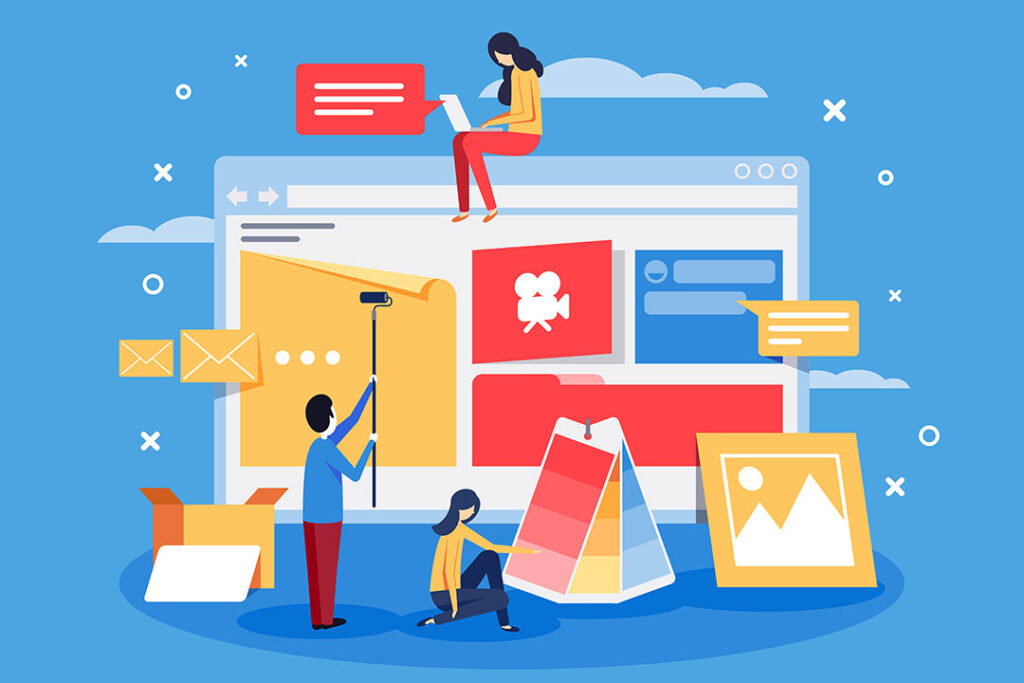
In creative industries, chaos can significantly hinder innovation. Envision a scenario where each project begins with optimism, but quickly descends into a tangle of miscommunications, missed deadlines, and inconsistent outputs. This challenge is all too common among creative teams lacking effective design collaboration tools.
Yet, the adoption of sophisticated collaboration solutions can dramatically transform their creative processes. Design collaboration is crucial in modern creative workflows, enabling professionals to seamlessly blend ideas, feedback, and visions from diverse perspectives.
The result? Projects that are not only completed more efficiently, but also deliver high-quality creative results that resonate.
The Importance of Design Collaboration
Design collaboration is more than a convenience — it’s a catalyst for unleashing the full potential of creative teams. In a time where remote work and dispersed teams are increasingly common, the ability to collaborate effectively becomes crucial.
Design collaboration facilitates a unified vision among team members, regardless of their physical locations. It encourages a dynamic exchange of ideas, ensuring that every voice is heard and every concept is explored.
This collective approach not only accelerates the creative process, but also enhances the quality of the final output. Teams that embrace collaboration tools find themselves better equipped to respond to changes quickly, adapt to new information, and make informed decisions that align with their creative goals.
Common Challenges in Creative Workflows
Creative teams often encounter a set of recurring challenges that can disrupt their workflows and diminish the quality of their work.
Here’s a closer look at some significant hurdles in remote and hybrid settings:
-
Asset Mismanagement: Critical files are often misplaced or outdated versions are used inadvertently, leading to confusion and wasted time.
-
Inefficient Feedback Loops: Without a streamlined system for collecting and implementing feedback, revisions can become a bottleneck, causing projects to stall and frustration to mount among team members.
-
Version Control Issues: Without clear protocols for document versions, teams can find themselves working on the wrong file, resulting in redundant efforts and inconsistencies.
-
Reduced Spontaneity in Brainstorming: About 33% of employees note a reduction in casual moments that previously led to spontaneous brainstorming, suggesting that remote work might inhibit some of the informal creativity that office environments foster.
-
Feeling Isolated: Another 44% of workers feel like they are operating in a bubble, largely unaware of their colleagues’ activities. This sense of isolation can lead to decreased morale and a disconnect from the team’s overall vision and goals.
-
Collaboration Difficulties During Calls: Additionally, 40% of employees find it harder to collaborate effectively with their team during calls. This challenge highlights the need for more intuitive and responsive collaboration tools that can simulate the ease of in-person interactions.
Addressing these challenges is essential for maintaining the smooth operation of creative projects and ensuring that final deliverables meet client expectations. Effective design collaboration tools must provide solutions that not only bridge the gap between remote team members, but also foster an environment conducive to creativity and productivity.
How Design Collaboration Tools Simplify Creative Workflows
Centralized Communication and Project Management
Design collaboration tools centralize communication and project management within a single platform, ensuring that all team members have instant access to the most current files, feedback, and project updates. This centralization eliminates common pitfalls of miscommunication and maintains consistency across all stages of a project.
Real-time Collaboration Features
Real-time collaboration features enable team members to work together synchronously, regardless of their physical location. This capability is invaluable for quick decision-making and effective brainstorming sessions, ensuring that ideas are shared and refined in real time.
In fact, 49% of respondents report that their teams primarily collaborate through real-time remote working, highlighting the widespread adoption of these dynamic tools.
Adapting to Diverse Working Styles
While real-time collaboration is prevalent, a notable 26% of teams utilize asynchronous remote working methods, allowing for flexibility in how and when individuals contribute. This approach can cater to different time zones and work schedules, showcasing the versatility of collaboration tools in accommodating various work environments.
Additionally, despite the rise of digital tools, 25% of teams still rely on face-to-face interactions, underscoring the importance of traditional collaboration in certain contexts.
Seamless Software Integration
Effective collaboration tools integrate seamlessly with other essential software used by the team, such as content management systems and digital asset management software. This integration enhances productivity by connecting different aspects of the creative workflow, helping to automate routine tasks and allowing creative professionals to focus more on design and less on administrative duties.
Key Features of Effective Design Collaboration Tools
When choosing design collaboration tools, several key features stand out as essential for enhancing creative workflows:
-
Cloud Storage: Provides a centralized repository for all creative assets, ensuring that team members can access up-to-date files from anywhere at any time.
-
Version Control: Keeps a record of all changes made to a document, allowing team members to revert to previous versions if needed and ensuring everyone is working on the latest version.
-
Integration Capabilities: Allows the collaboration tool to work seamlessly with other tools used by the team, such as content management systems and digital asset management software, streamlining the creative process.
-
Real-time Feedback and Approval Processes: Enables team members to give and receive feedback directly on the work itself, reducing the need for lengthy email threads and meetings. This feature accelerates the approval process, as decisions and revisions are made swiftly and documented within the tool.
-
Customizable Workflows: Offers the ability to tailor the tool’s workflow to fit the team’s specific needs, accommodating various project types and team sizes, which enhances overall efficiency and effectiveness.
These features collectively address the common challenges faced by creative teams, facilitating smoother collaboration, reducing errors, and ultimately leading to a more productive and satisfying creative process.
Harness the Power of Design Collaboration With Lytho
Design collaboration is the cornerstone of a thriving creative environment, transforming individual efforts into cohesive, impactful results. By integrating effective collaboration tools into their workflows, teams can enhance creativity and streamline processes to meet and exceed their creative goals. Embrace the power of design collaboration to turn your creative chaos into a well-oiled machine of innovation.
Discover how design collaboration tools can revolutionize your creative process. Contact Lytho today to explore our solutions and see the difference for yourself.
Do you want to give yourself and your creative team more room for creative stimulation by automating the boring stuff? Lytho helps you streamline your entire workflow and harmonize all brand collateral under a single, uniform platform. Feel free to reach out to us by scheduling a demo and learning how our creative solutions can boost the effectiveness of your creative projects. We look forward to speaking with you!

Ready to simplify your creative operations and start having a little fun at work again? Schedule time to talk with us.
Let us show you how Lytho’s Creative Operations Platform helps in-house creative and marketing teams do better work, ease the stakeholder experience, and stay on brand.
Schedule a Demo posted by
posted by 

